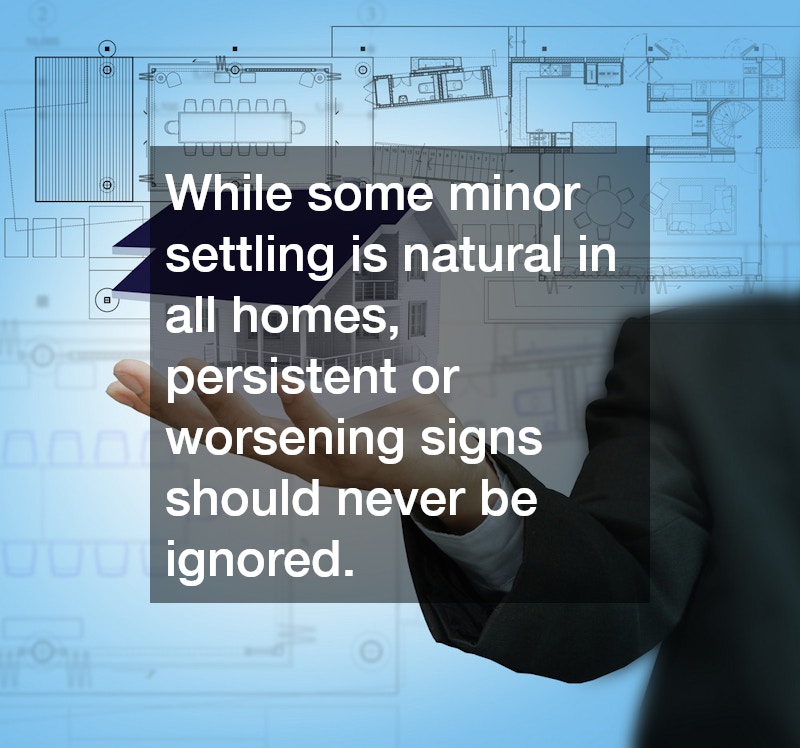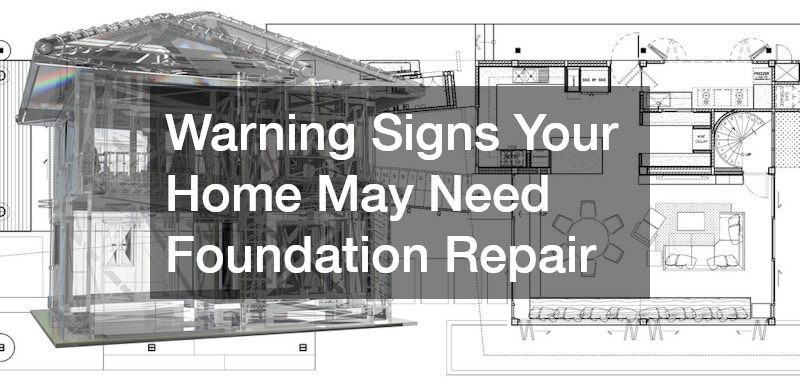Warning Signs Your Home May Need Foundation Repair
Your home’s foundation is one of its most important structural components. It supports everything from the walls and floors to the roof overhead, ensuring stability and safety. When foundation problems develop, they can lead to costly repairs and significant damage if left unaddressed. Unfortunately, many homeowners overlook the early warning signs, assuming small cracks or uneven surfaces are normal. Recognizing these red flags early on can help protect your investment and avoid larger issues down the road.
Cracks in Walls and Floors
One of the most common indicators of potential foundation problems is cracking. While hairline cracks in drywall may result from natural settling, larger or expanding cracks should raise concern. Horizontal cracks, especially along basement walls or near windows and doors, can signal pressure against the foundation. Similarly, cracks in tile or concrete flooring may point to shifting underneath the home. Monitoring these changes is essential, as widening or recurring cracks often require professional evaluation.
Doors and Windows That Stick
If you notice doors and windows that suddenly become difficult to open or close, the culprit may be more than just humidity. Foundation movement can cause frames to become misaligned, resulting in sticking or gaps around the edges. You may also see uneven gaps at the top or bottom of doors, or notice that windows no longer lock securely. These small inconveniences are often early signs of bigger structural issues.
Uneven or Sloping Floors
Walking through your home, do you feel as though the floor slopes or sags in certain areas? Uneven floors can result from foundation settlement or shifting soil beneath the house. While older homes may naturally have some irregularities, noticeable dips or slants usually point to structural stress. Placing a ball on the floor and watching if it rolls in one direction is a simple test to confirm unevenness. Ignoring these signs may allow the issue to worsen, leading to more costly repairs later.
Gaps Around Exterior Structures
Take a walk around the outside of your home. Do you notice gaps forming between the foundation and exterior features like chimneys, stairs, or porches? These separations can occur when the foundation moves independently of the rest of the structure. Even small gaps can allow water infiltration, which accelerates deterioration and compromises stability. Addressing these early can save homeowners from expensive reconstruction efforts.
Water Damage and Poor Drainage
Water is one of the greatest threats to a foundation. Poor drainage around your home can cause water to pool, leading to soil erosion or pressure against the foundation walls. Signs of trouble include water stains in the basement, damp spots along floors, or mold growth in areas that should remain dry. Persistent moisture problems not only affect air quality but can also weaken the integrity of the foundation over time.
Bowing or Leaning Walls
Basement or crawl space walls that bow inward or lean are serious red flags. This condition often results from hydrostatic pressure, where water-saturated soil presses against the foundation. Over time, this pressure can compromise stability and put the entire structure at risk. Bowing walls should never be ignored, as they indicate a significant structural problem requiring immediate attention.
Separations in Trim and Molding
Inside the home, another subtle indicator of foundation trouble is gaps or separations in trim, molding, or baseboards. When a foundation shifts, it causes walls and ceilings to move out of alignment, leaving visible spaces between decorative elements and the surfaces they’re attached to. While these gaps may seem minor, they often point to a deeper problem lurking beneath the home.
Sagging or Misaligned Rooflines
A less obvious but important warning sign is a roofline that sags or appears uneven. Because the foundation provides support to the entire structure, any movement at the base can eventually affect the top. Misaligned rooflines can compromise the integrity of the roofing system and lead to leaks or structural instability. Addressing the foundation issue is the first step in resolving this larger problem.
When to Call a Professional
While some minor settling is natural in all homes, persistent or worsening signs should never be ignored. If you notice multiple indicators—such as cracks, uneven floors, and sticky doors—it is time to seek a professional inspection. Licensed contractors specializing in foundation repair can evaluate the extent of the problem and recommend solutions tailored to your home’s condition. Waiting too long can transform manageable repairs into major reconstruction projects, significantly raising costs.
A strong foundation is essential for the longevity of any home. Recognizing the warning signs of potential problems—such as cracks, sticking doors, uneven floors, and water damage—can help homeowners act quickly before issues escalate. Consulting with a professional specializing in foundation repair ensures that problems are properly diagnosed and resolved.
Ultimately, safeguarding your home’s foundation is one of the most important steps you can take to protect your investment and your peace of mind. By paying attention to subtle changes and responding to red flags, you can avoid costly repairs and ensure your home remains a safe haven for generations.

